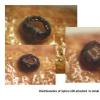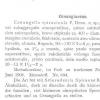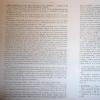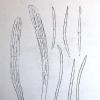
19-12-2025 10:10
Patrice TANCHAUDBonjour, récolte réalisée en milieu dunaire, a

18-12-2025 17:23
 Bruno Coué
Bruno Coué
Bonjour,je serais heureux d'avoir votre avis sur c

18-12-2025 21:17
Pol DebaenstThe identification took me to Byssonectria deformi

18-12-2025 18:07
Margot en Geert VullingsThese plumes were found on rotten wood.They strong

17-12-2025 18:35
 Michel Hairaud
Michel Hairaud
Bonjour à tous/Hi to everyone I am passing along

15-12-2025 15:48
 Danny Newman
Danny Newman
Melanospora cf. lagenaria on old, rotting, fallen

15-12-2025 15:54
 Johan Boonefaes
Johan Boonefaes
Unknown anamorph found on the ground in coastal sa

15-12-2025 21:11
 Hardware Tony
Hardware Tony
Small clavate hairs, negative croziers and IKI bb

15-12-2025 07:09
 Danny Newman
Danny Newman
indet. Rutstroemiaceae sp. on unk. fallen leavesMc

Good day
I try to make microphotos for some Discomycetes samples, which looks interesting for me. May be you have some ideas about them.
Alex

Zotto

Growes J.W. The genus Godronia // Canadian Journal of Botany, 1965, 43:(10) 1195-1276? I have not access to this article. Possible there are more information about Godronia spiraeae there.
Alex

Thank you, Guy.
I can not to verify your idea , because I have not Groves original article from Canadian Journal of Botany:-( But according Mycobank, basionim of Godronia cassandrae f. spiraeicola (Henn.) Groves is Cenangella spiraeicola Henn. In the original description of Cenangella spiraeicola in Hennings paper spores are even smaller - 10-13 x 1,5-2.
May be you have another information?
Alex

this sporesize fits good for the imperfect, Groves gives no indication for the sporesize of this forma so i assume it will be the same as cassandrae only differing in substrate.
i will send photos.
cheers Stip

For spiraeae Groves says 20-45 x 2.5-4 µm, which is also much wider than you say.
Zotto

I plan to be in the same locations in the Carpathian mountains in 2 weeks and try to find a more mature specimens.
Alex







